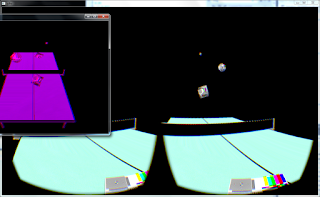Our Journey

Since our last blog entry, we have spend a lot of time and effort into this project. The result speaks for itself. On the Oculus Rift side, we were able to reuse many parts of our Touch controller hand tracking code from Project 1. On the Leap Motion side, we have successfully integrated the Orion SDK. Integrating the Orion SDK was mostly uneventful and we were able to start tracking hand positions after this. Due to the difference between platforms, we applied different scaling factors to the raw sensor data in order to harmonize the coordinates. We then compiled rpclib for both the Oculus Rift application and the Leap Motion application. We spent a long time on this. We were first burned by run-time library types mismatch. After figuring that out, we went through many iterations of trial-and-error before we figure out the correct way to do two-way communication between the server and the client asynchronously so that it does not block rendering code. Along the way, we also l...
